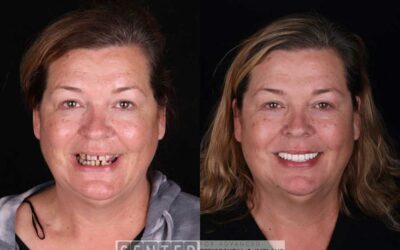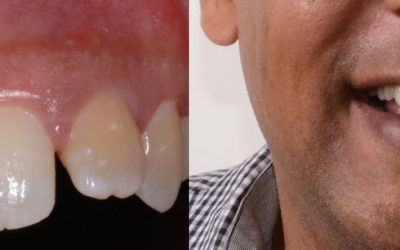Are Additional Procedures Necessary Before Getting Dental Implants?
Before you get dental implants, it’s important to find out if any other adjunctive services will make up part of your dental implant surgery. Since the overall dental implant procedure is about more than just replacing missing teeth, there could be additional steps (or fees) to keep in mind.
As part of your care planning process, our oral and maxillofacial surgeons in Los Angeles will discuss each step of the dental implant process with you. Including additional steps such as:
Removing Teeth or Tooth Roots
Not everyone who is getting dental implants already has missing teeth. Sometimes our oral surgeon needs to remove infected, non-restorable teeth before the dental implant surgery. It’s best to give yourself at least a few weeks after a dental extraction before any artificial teeth are installed, be they dental bridges or dental implants.
If you’ve reached the point that your natural tooth is too mobile or broken to eat anything other than soft foods, it may be past the point of trying to repair it. Our implant specialist will determine if it’s better to go ahead and have the tooth extracted and then replace it with a dental implant or try to preserve it with another treatment.
Dental Bone Grafting
The bone inside your jaws is the foundation of your new dental implants. Whether you’re replacing a single tooth or getting implant-supported dentures, you still need strong bone to hold them in place. If you don’t have enough healthy bone there already, our dental specialist can place graft tissue to build up that space ahead of time.
Normally bone grafts are a minor oral surgery that can be completed with local anesthetic (IV sedation isn’t needed.) Just keep in mind that your bone heals slowly so you won’t get a new tooth on the same day. We perform this outpatient surgery in our Los Angeles dental office, and sedation is available when needed. The implant restoration will be installed a few months later.
Autogenous Dentin Grafting
If bone grafting is necessary for your dental implant surgery, there’s a great alternative to traditional grafting called autogenous dentin grafting that uses the patient’s extracted teeth to create an autologous graft in just 15 minutes.
Using your own extracted tooth for a dental graft has many benefits over traditional bone-grafting procedures. Fast bone healing and soft tissue response are two major advantages of autogenous dentin grafting over other treatments. Additionally, because this procedure uses your own natural material, there is no risk of rejection or inflammation. There is also no chance of disease transmission or fast resorption—which means your implant will be more stable and secure than ever before! Finally, because we can reuse existing material rather than purchase a separate donor material, the cost savings on this procedure can be substantial compared to other methods of implantation or surgery preparation procedures.
Autogenous dentin grafting is quickly becoming one of the most popular treatments available for those needing dental implants or preparation procedures.
Socket Preservation
Dental implants essentially fill in the root space of natural teeth. But when a tooth is removed, it leaves an open socket. Since the dental implant won’t be so precise that it fits the exact size and shape of the socket, it needs extra bone to help support it. In those scenarios, implant dentistry specialists will place a bone graft into the socket to help preserve it. The graft material will fuse with the surrounding bone so our Los Angeles implant specialist can install the dental implant a few months later.
Tooth loss naturally triggers resorbing (shrinking) bone tissues. Socket preservation helps prevent bone loss before it occurs, improving the success of your future dental implant surgery. That’s why it’s best to place the graft on the same day as the extraction.
Ridge Augmentation
Before you replace missing teeth, our oral and maxillofacial surgeons will need to ensure that the bone in your jaws is deep and wide enough to encase each implant. But tooth extraction or loss can trigger natural bone shrinkage, weakening your jaw in those areas. So to counteract the effects of bone loss, augmentation or “bone grafting” is performed.
Bone grafting helps rebuild the weak bone tissues in your jaw. The graft material is sometimes placed immediately after teeth are extracted (as in socket preservation) or with sinus lift surgery. Other times, our dental specialists perform stand-alone ridge augmentation a few months leading up to your implant surgery.
Sinus Lift Surgery
If you have missing teeth in the upper back area of your mouth, your nasal sinus cavities typically rest against the tooth roots. But whenever those teeth fall out or are removed, there is nothing left to support your nasal sinus lining, so the lining tissue “drops” into that space.
Installing dental implants when the sinus lining is too low will cause a rupture in your sinus cavity. This can lead to chronic infection, pain, and implant failure.
To prevent any of these side effects, our oral surgeon will want to physically raise the lining of your sinus cavity, then place a bone graft to fill in that void. As the bone graft materials integrate with your jaw, it creates a safe space for dental implants to be installed.
Sinus lift surgery is one of the most common adjunctive procedures to accompany an implant denture, full arch implants, or when replacing missing teeth in the back of your mouth.
Advanced Platelet Rich Fibrin (PRF)
PRF is a treatment that enhances the success rate of many oral surgery procedures. Every patient’s platelet-rich fibrin is processed from their own blood, eliminating the chances for rejection or infection, and scientifically proven to increase healing abilities.
Platelet-rich fibrin (PRF) is a form of concentrating growth factor that accelerates healing by promoting tissue regeneration. The process begins with drawing the patient’s blood sample and placed into a special centrifuge. This spinning separates the white blood cells from the platelets and is transformed into platelet-rich fibrin in minutes. The platelets contain powerful growth factors that stimulate local cell activity and angiogenesis (blood vessel formation). These properties are ideal for use in regenerative dental treatments such as alveolar ridge augmentation, implantology, and periodontal treatments.
Advanced PRF technology takes this one step further by adding leukocyte-rich components that promote tissue regeneration while also acting as an antimicrobial agent against bacteria. By utilizing this advanced technology, we are able to improve healing times significantly while reducing potential post-operative complications associated with dental procedures such as wisdom teeth extraction, sinus lift surgeries, gum grafts, and dental implants. Furthermore, advanced PRF has been clinically proven to increase bone density around dental implants compared to conventional grafting alone.
Periodontal Disease Treatment
Active gum disease weakens both your bone and gum tissue. Even though dental implants are essentially artificial tooth roots, the implants fuse with your bone. If your dental health isn’t up to par, your implant site will reject your artificial teeth. It’s important that your gums heal before the implant procedure. Any swelling, severe or minor bleeding or nearby areas of periodontal disease need to be resolved before you want to replace missing teeth.
Sometimes people replace natural teeth because their gum disease is too severe. If your natural teeth can’t be restored, our oral surgeon will remove them, place a bone graft if needed, and then allow your mouth to heal before installing dental implants. Your gum tissue may need a few months before it’s safe to move forward with installing your replacement teeth.
What to Expect
Most of our dental services involve replacing multiple teeth or some form of oral surgery. That’s why The Center for Advanced Periodontal & Implant Therapy offers comfortable sedation options, even if you have a tooth removed or place a single dental implant. The more comfortable you feel, the more confidence you’ll have about getting your new teeth.
Implant Surgery in Los Angeles
At The Center for Advanced Periodontal & Implant Therapy, our Los Angeles experts will discuss all aspects of your implant surgery prior to scheduling the actual treatment appointment. That way, you know ahead of time if any additional steps are needed.
Your customized care plan will include a breakdown of each treatment, the overall timeframe required, as well as any fees related to the dental implants or prerequisite surgeries.
For honest, quality dental implant surgery in Los Angeles, call The Center for Advanced Periodontal & Implant Therapy today.
You May Also Like...
Is Getting a Dental Implant Painful? Insights and Expectations
Did you know that over 3 million people have dental implants, and that number is growing by 500,000 annually? Despite...
Elevating Dental Implant Standards in Los Angeles for Patient Safety
Sarah's Implant Journey: A Testament to Transformation Meet Sarah. Three years ago, Sarah avoided mirrors, rarely...
Comparing Immediate Load vs. Traditional Dental Implants
Dental implants have revolutionized the way we replace missing teeth. They're not just prosthetics; they restore the...



